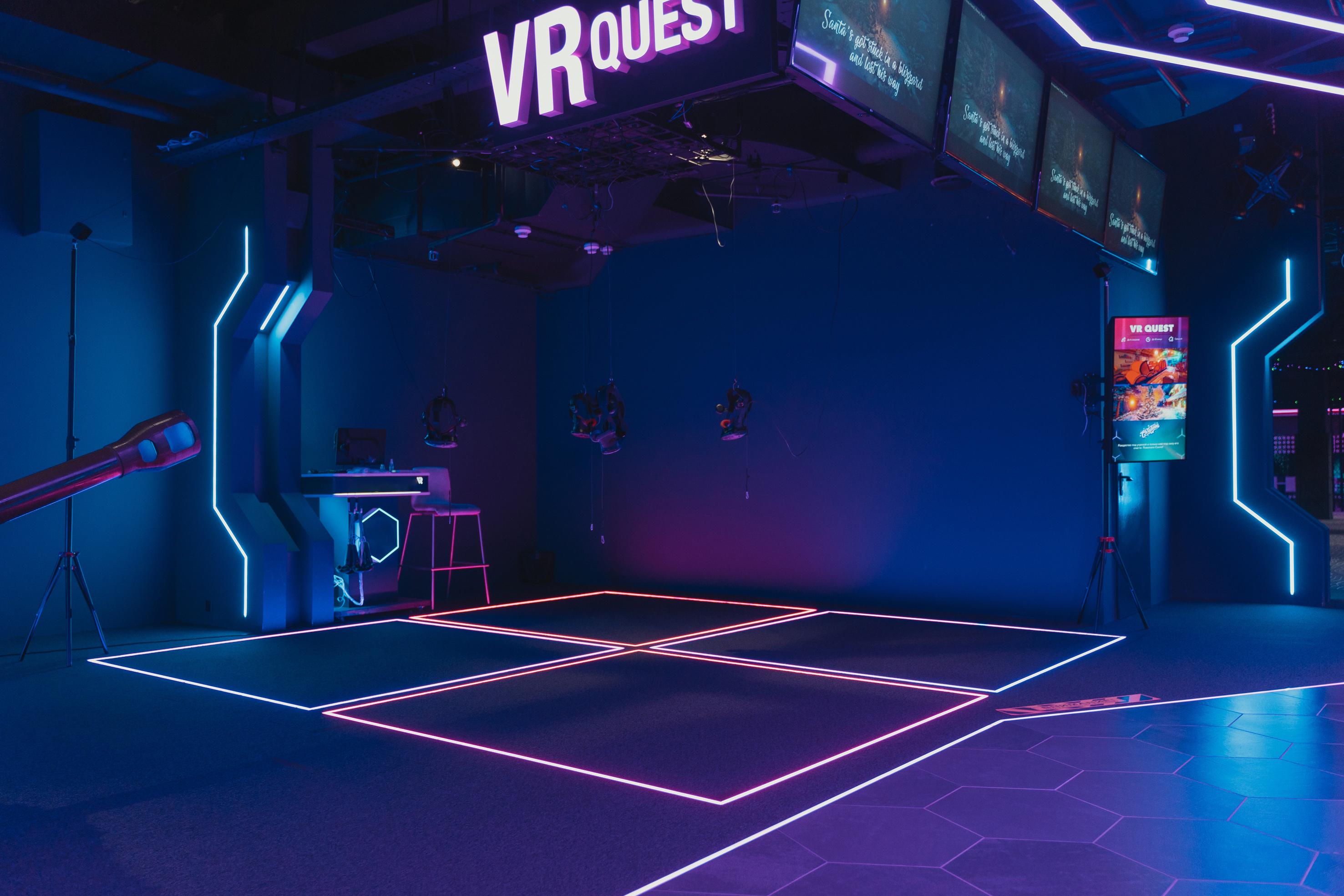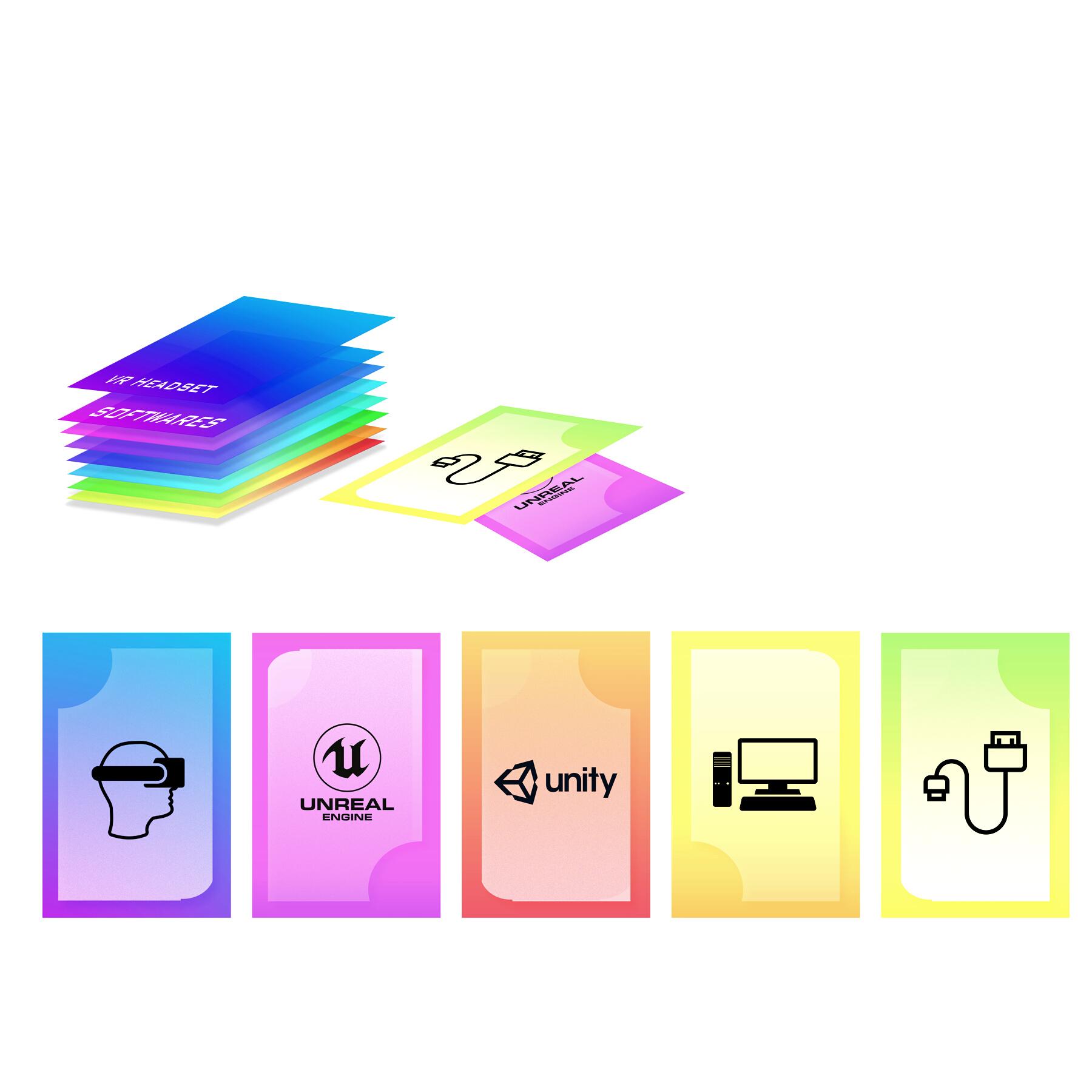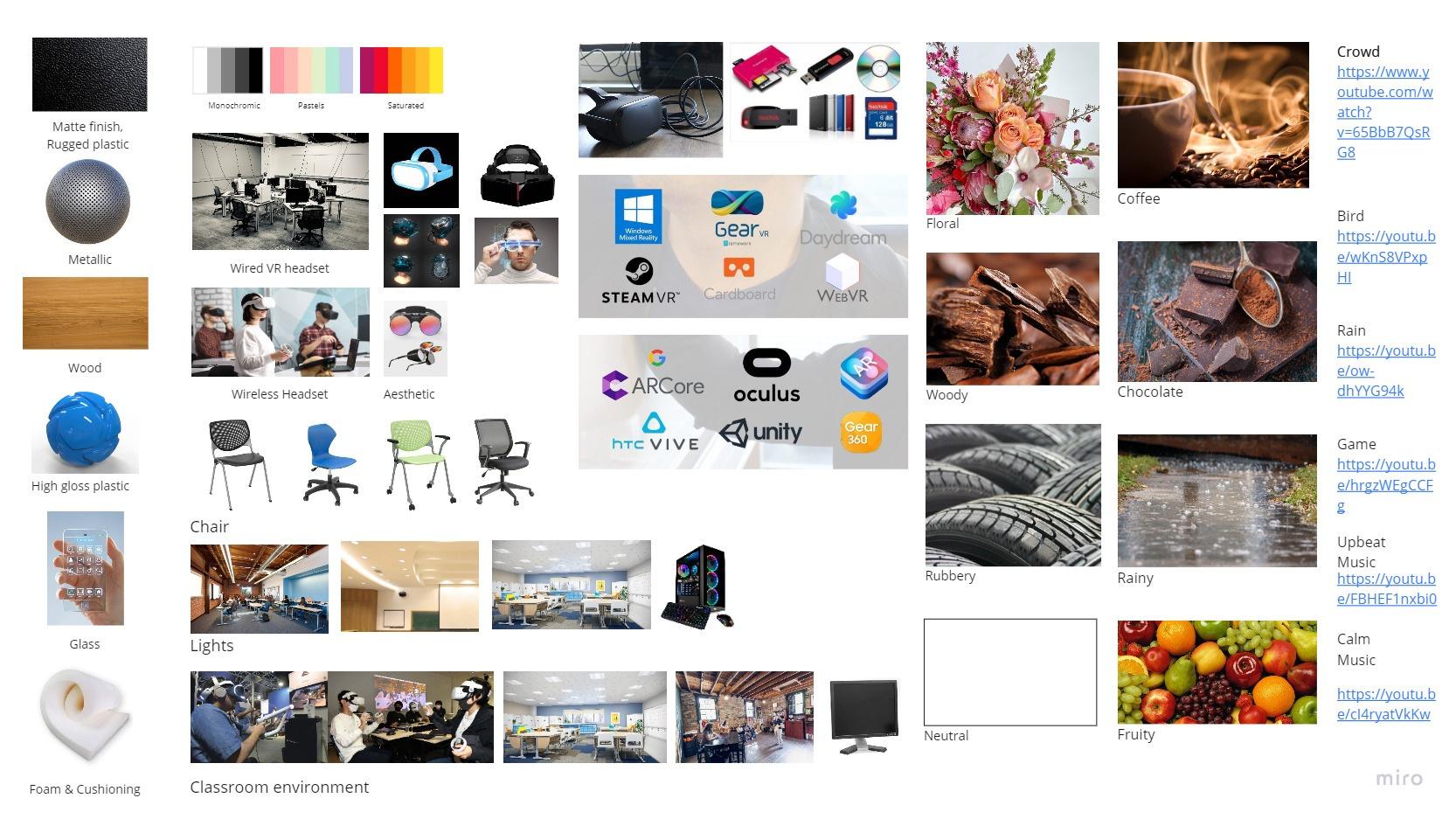IDUS 711 Methods of Contextual Research
Mid - Term Presentation

IDUS 711 Methods of Contextual Research
Mid - Term Presentation
Learning AR/VR in Design Schools

Krati Bangard, Parina Vaghani
Roma Patadia, Rukaiya Vohra
Shaily Parikh

To find out the challenges and grey areas in the adoption and use of AR & VR in the design industry, to create an ideal experience for learning them.

What is the scope of AR & VR in design?
What are the applications of AR & VR in design?
Defining the current learning scenario.
What are the challenges with learning AR/VR?
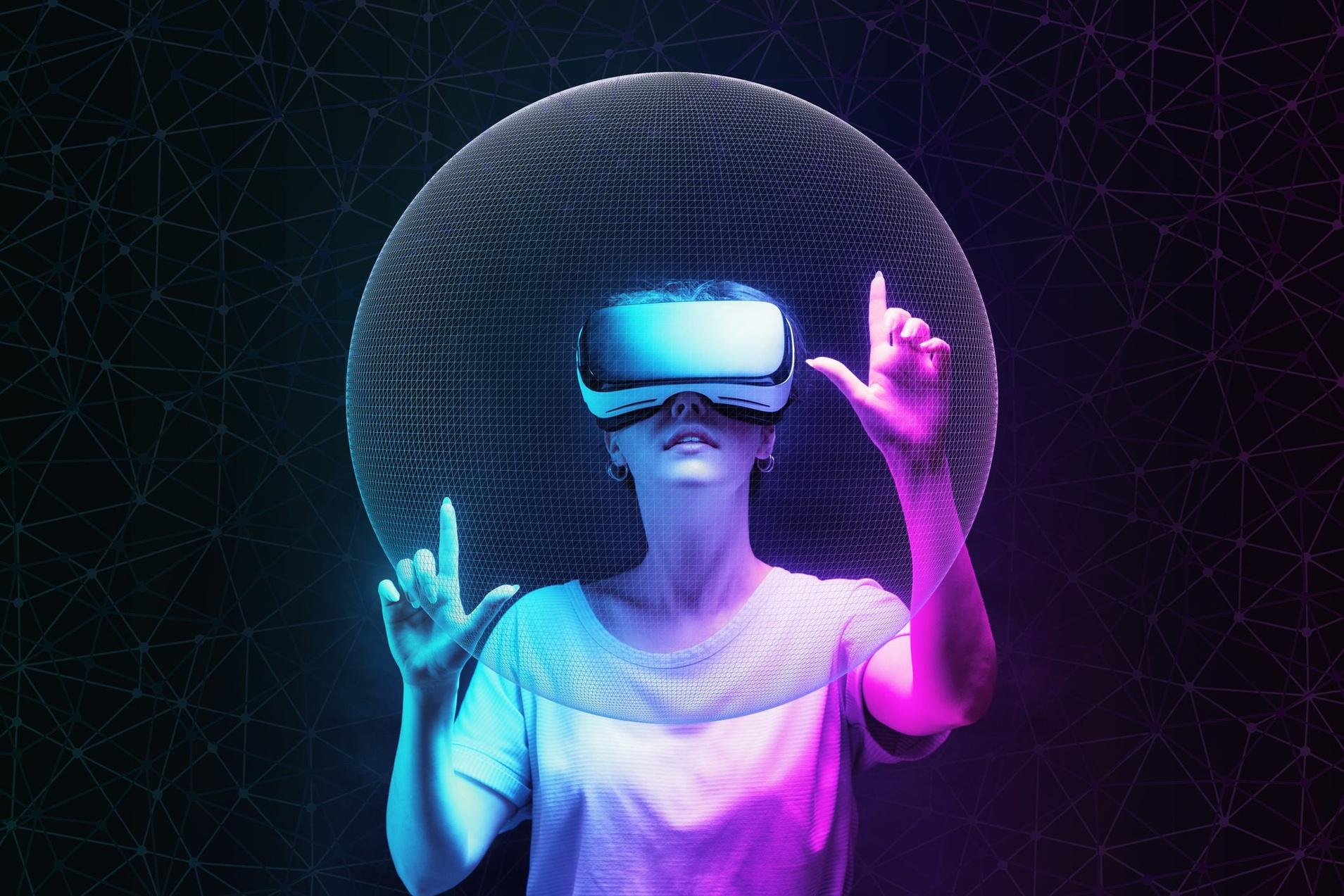

The global market of VR in education is projected to reach million by 2026. $13,098
Hence VR is becoming a strong tool in the education industry with votes. 41%
Learners feel more confident when studying using VR compared to classroom training. 40%

Its benefits of providing information in real time & facilitating mirroring real life contributed to votes. 49%
Providing information in real time
Facilitate mirror
Enhance creativity in product design
Enable collaboration in real time
Enable user to experience differently
Capture novel user data
Bulky hardware and technical glitches were the top adoption barriers for VR contributing to votes. 26% Its benefits of providing information in real time & facilitating mirroring real life contributed to votes. 49%
Providing information in real time
Facilitate mirror
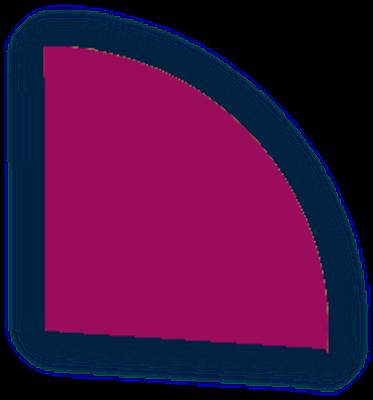
Enhance creativity in product design
Enable collaboration in real time
Enable user to experience differently
Capture novel user data

PROS OF AR TRAINING
Safe experiential learning that’s engaging for learners
Dynamic in-the-moment performance support
Easy to reuse and distribute at scale
CONS OF AR TRAINING
Not especially useful for soft skills training or topics open to interpretation.
Newer technology that is advancing and thus may call for occasional updates.
More expensive than training modalities like eLearning and ILT.

Statistical ratios of most relevant areas of design
Fashion Design
8%
Interior Design
19%
Product Design
41%
Design based educational institutions and students can use the technology to display virtual environments that are impossible to visualise in physical classrooms like spaces, objects, objects in spaces, etc.

Graphic Design
32%
Expansion of immersive technology into nonconventional design fields like service design

How different design schools across the globe are trying to adapt to AR/VR via architecture & game design.








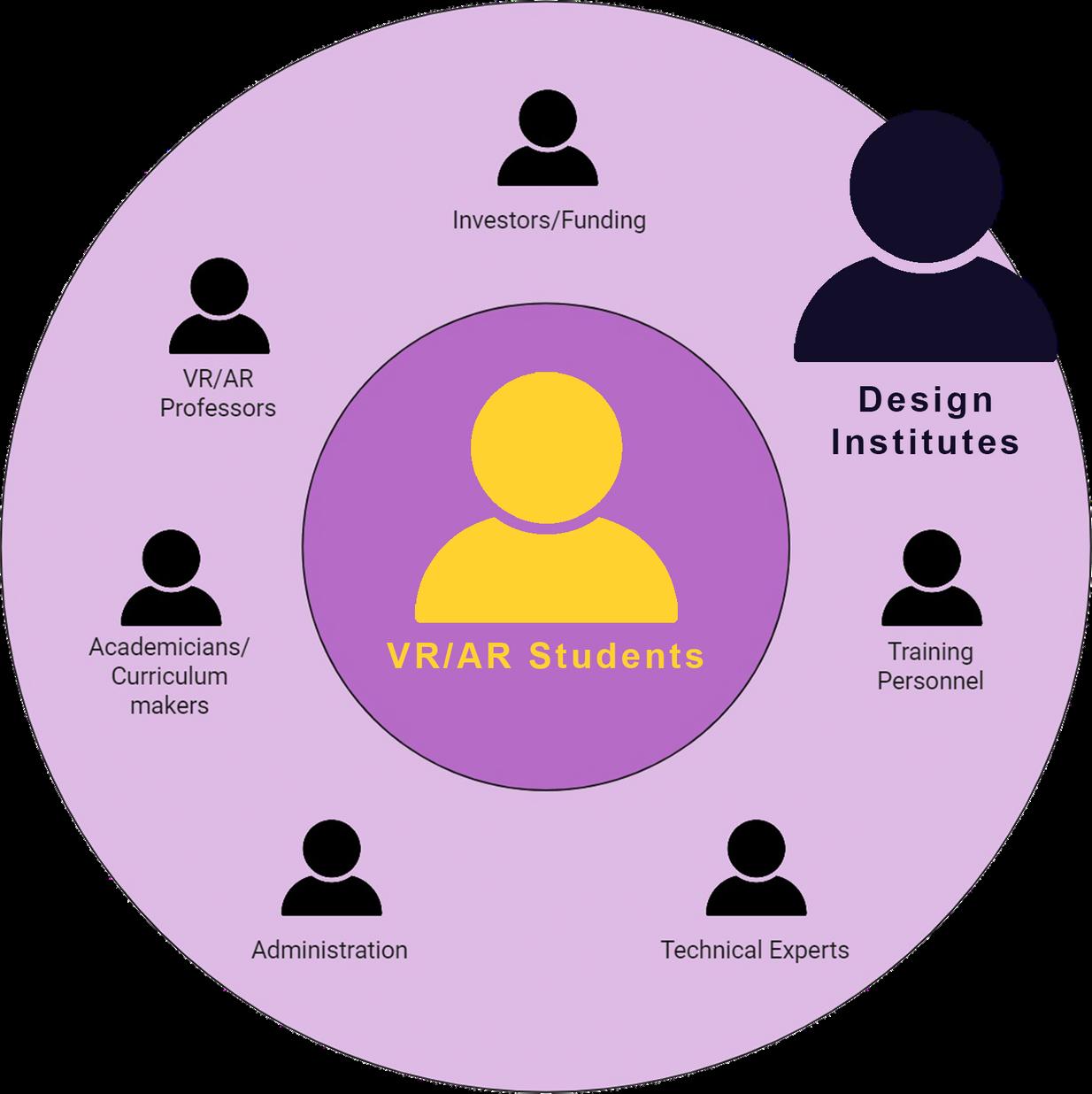

AR/VR Classes and Workshop at SCAD

Pain Points
Curriculum is largely focused on gamification Professor relying on professional technical help
Not enough space to operate the machines
Limited accessibility of equipments by the school
AR/VR Classes and Workshop at SCAD

Gain Points
Inspiring posters in the classroom to set the tone
Projects focused on benefits of technology
Collaborative discussions about technology
Intersection of many other design fields
Presentation and
Communication with Discord
Liberty by professor for approach & method
Objectives
Hypothesis
Challenges in Adoption
Finding out Course Curriculum
Variables
Analysis
Affordability, Underdevelopment University students and staff
Interview, Survey and Cultural Probe
Very VR and Gaming focused Professors teaching AR/VR Interviews
Why are the projects gaming-focused
Student projects being gamingfocused
Professors and Students in AR/VR
Interviews, Focused group discussions, Cultural probe
Why is VR more popular than AR in the curriculum
The Immersive technology being applied in more fields

Students from other design fields
Interviews, Focused group discussions
Objectives
Hypothesis Variables
Analysis
Future scope for students
Is there anything beyond healthcare and gaming
Professors and Students in AR/VR and other design
Pain points while using AR/VR
Physical and mental effects after the use
Headgear being heavy and uncomfortable
Cognitive senses can affect the brain to get tired
Professors and Students in AR/VR
Interview and Cultural Probe
Interviews and Focused group discussions
Professors and Students in AR/VR Surveys and Interviews
Advantages of the use in design education
Student projects inclined more towards VR

Professors and Students in AR/VR and other design
Interviews and Focused group discussions
How are students introduced to the tech
'The first class we had was watching this movie called Ready Player One and that was to make us understand the possibilities like in the future this is gonna happen and it is pretty evident that it will happen.'
'The curriculum is structured in a way understanding that the students dont have technical knowledge and don't come from engineering background but they are proficient in CAD modelling so we only teach them how to project there existing models to get them interested and then dive deeper into it '
According to a few studies done using TAM Model for AR VR, VR is positively influenced by perceived usefulness and Perceived ease of use does not have a significant impact on intention to use.

How steep is the learning curve for the students and various challenges
One of the trickiest things with learning VR is understanding the polycounts of models and optimizing them so that the hardware can support the work done.
The courses are focused on creating outcomes and they lack educating students about basic user research and user testing which impacts their projects overall. I wouldn't call it difficult. It is annoying. It is a very long process. It is 150 steps just to set up the basic interactions. The UI of the softwares is really bad, it takes days just to understand the software. Just to get to 5% you have to put in your 100%.
There are atlernatives like Spatial and Decentral where coding isn't required but it does not have any interactions and tech is still developing.
Understanding AR VR is not difficult but to make something on software you need patience and problem solving mentality.

What are there vie
'I use VR headsets only when finalizing the visual is vr world other than that I prefer working on my computers as for me wearing those headsets for too long gives me migraines. and the film I'm making is 15 mins long which is how long it is preferred by most of us to use a headset'
- Immersive Reality Student
'Workspace/Studio is good enough but when it comes to design in VR it gets difficult as for a VR movie I do need to move around in the virtual space to mark a few things so the space gets a bit congested'
- Immersive Reality Student
Using VR Headset for more than 15 minutes could negatively impact hand-eye coordination, balance, and multi-tasking ability. Bigger space is required whie making a VR movie.

'The only issue I'm facing is when you actually want to present your work to multiple people. Like, let's say there are 10 Jurors who want to see your work at the same time. We don't really have headsets which we can give them and you know, enjoy it at the same time'
- Immersive Reality Student

Feedback depends on Professor's niche, if it is a more technical Professor so the feedback is also of similar nature.
'Oculus can be operated only by one person so It is difficult for me cause I have to remember the entire system and then I have to guide'
- ProfessorCause mutiple people cannot wear headset at the same time, it is difficult to guide students when they are wearing it.
AR VR is complex and has a lot of aspects to it, hence it becomes difficult to get all answers from a single professor.
A lot of the student projects are games because that's how people are going to understand how VR works and it will then eventually get adopted for something much bigger than games.
'Mixed Reality will be the future cause as good as VR is it immerses you into a different world which is only used for its own purpose and on its own time. But mixed reality can be used daily like smart glasses'
Currently the use of AR VR is only limited to the use of game design when it has much greater potential unexplored. Mixed Reality is seen and expected by most to take over the future with Meta verse and smart glasses everything coming in.

